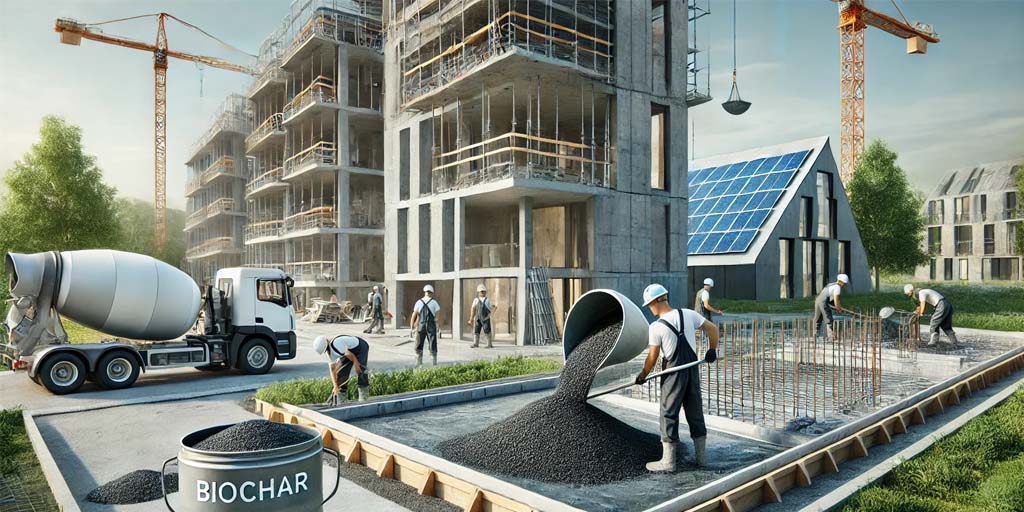Introduction
The construction industry is a significant contributor to global greenhouse gas emissions, primarily due to the production of cement. However, innovative solutions like incorporating biochar into concrete are emerging as promising ways to reduce the environmental impact of construction. This article explores the benefits, methods, and potential of using biochar in concrete.
What is Biochar?
Biochar is a carbon-rich material produced through the pyrolysis of organic biomass in a low-oxygen environment. Traditionally used as a soil amendment, biochar’s unique properties also make it an excellent additive for concrete.
Benefits of Biochar in Concrete
- Carbon Sequestration: Biochar helps sequester carbon within the concrete, reducing the overall carbon footprint of construction projects[1].
- Improved Mechanical Properties: Adding biochar can enhance the compressive strength, flexural strength, and fire resistance of concrete[1][2].
- Durability: Biochar improves the resistance of concrete to sulfate attack, chloride-induced corrosion, and shrinkage[2].
- Water Retention and Filtration: Biochar can enhance the water retention capacity of concrete and filter pollutants from rainwater runoff[1].
Implementation Methods
- Mixing Ratios: Biochar can be added to concrete in varying proportions, typically ranging from 3% to 10% by weight. The optimal ratio depends on the specific requirements of the construction project[2].
- Preparation: Biochar should be finely ground and uniformly mixed with other concrete components to ensure even distribution and optimal performance[2].
- Curing: Proper curing is essential to maximize the benefits of biochar in concrete. Accelerated CO₂ curing can further enhance carbon sequestration and mechanical properties[2].
Case Studies and Research
Recent studies have demonstrated the effectiveness of biochar in concrete. For instance, research has shown that incorporating 10% biochar by weight can increase the compressive strength of concrete by over 20% while also promoting significant CO₂ sequestration[2]. These findings highlight the potential of biochar-concrete composites in creating more sustainable building materials.
Challenges and Future Directions
While the benefits are clear, there are challenges to widespread adoption. These include the need for standardized production methods, ensuring consistent quality of biochar, and addressing any potential long-term durability concerns. Ongoing research and pilot projects are crucial to overcoming these hurdles and fully realizing the potential of biochar in concrete[3].
Conclusion
Incorporating biochar into concrete presents a promising pathway to more sustainable construction practices. By enhancing the mechanical properties of concrete and significantly reducing its carbon footprint, biochar offers a dual benefit of improved performance and environmental sustainability. As research continues to advance, biochar-concrete composites could become a standard in the construction industry, paving the way for greener buildings and infrastructure.
References
[1] Biochar in Concrete | biochar zero
[2] Mixture of biochar as a green additive in cement-based materials for …
[3] Biochar-concrete: A comprehensive review of properties, production and …







